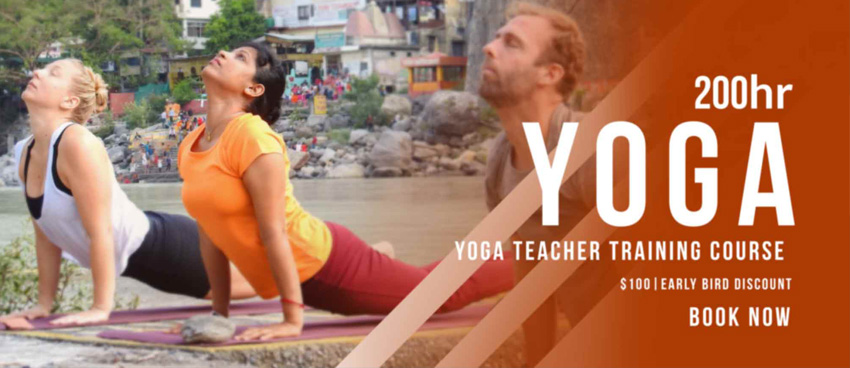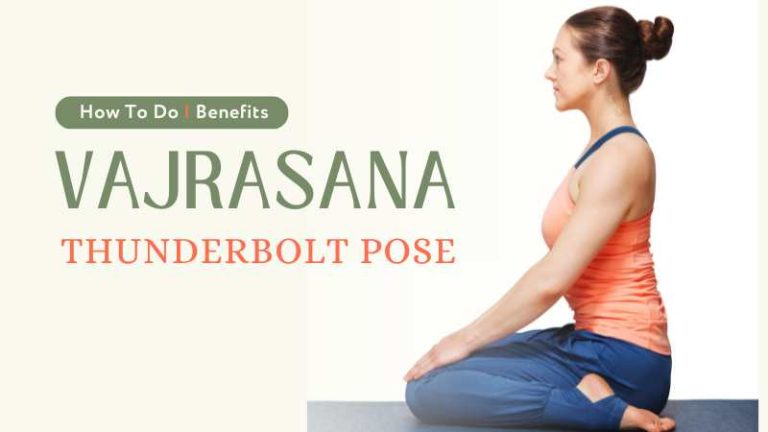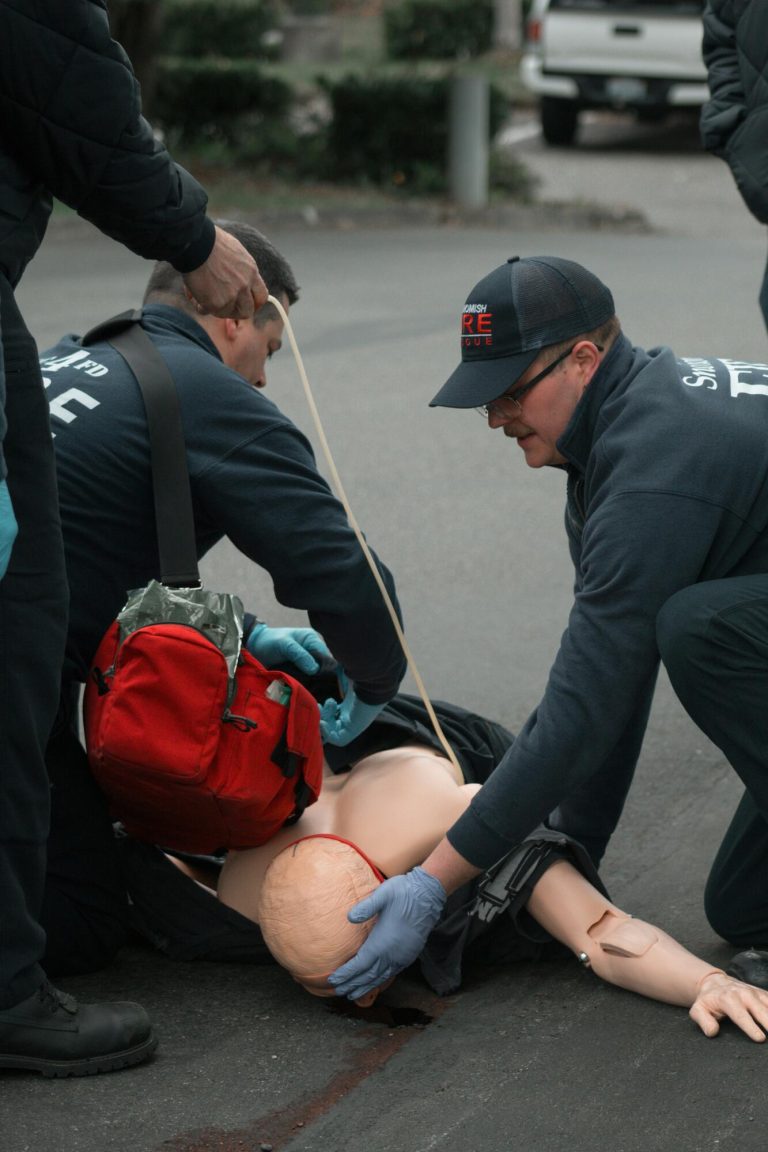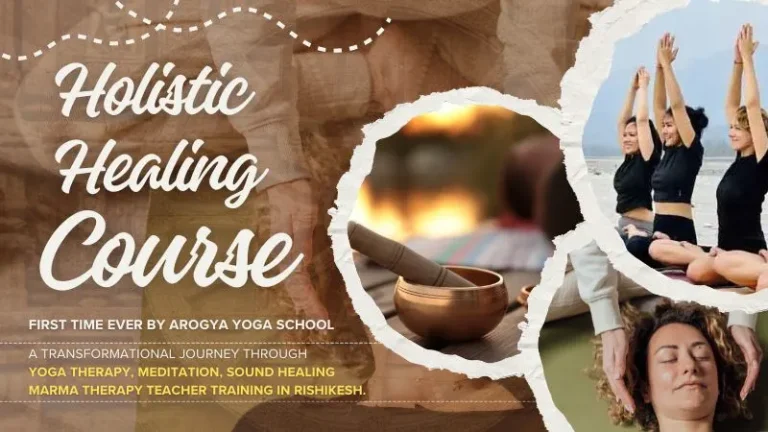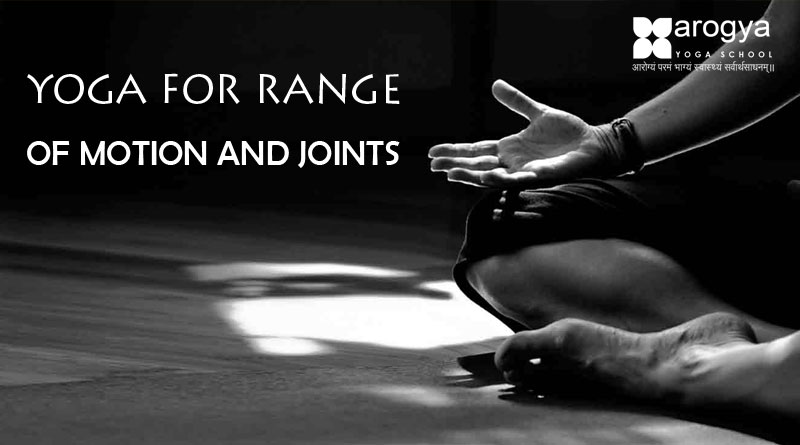
We often find our muscles sore and stiff due to various reasons such as working in the same position for hours on end, improper posture, etc. One of the special benefits of yoga asana practice that deserves a mention is how helpful it is for maintaining and/or improving range of motion in our joints. Although Range of Motion is a technical concept, it is worth understanding this concept and why it is one of the ways in which yoga is such a wonderful and versatile form of exercise.
Introduction to Range of Motion
Our bodies move through space because of the unique construction of how our bones fit together to form joints. Muscles are what make these joints move through space; physical motion is caused by muscle contractions. All joints in the human body have an optimum amount of motion, but specific joints in the body, such as hip joints or shoulder joints, don’t move the same way due to unique architectural constructs. When we describe joint motion we are talking about how much movement occurs at a specific joint, and this motion is called the RANGE OF MOTION (ROM).
YOGA FOR RANGE OF MOTION AND JOINTS:
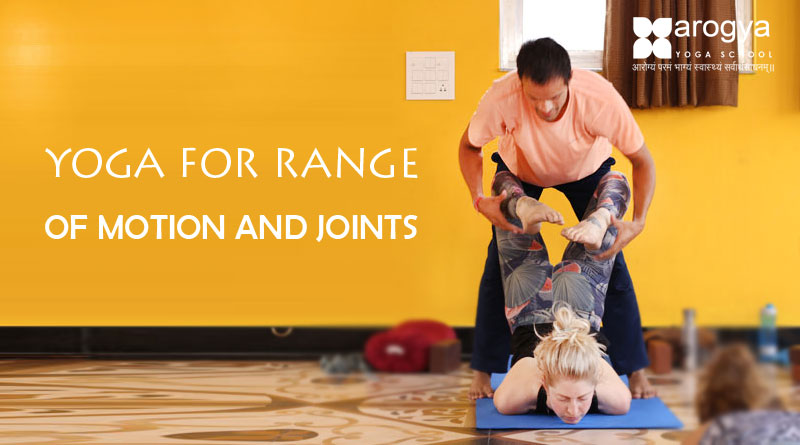
Range of motion is described very precisely by medical professionals, and they have determined specifically how much motion a shoulder joint has, a knee joint has, a thumb joint has, and these measurements are considered the “normal” range of motion of the joint.
When a joint moves more than the prescribed degree of normal movement, that joint is called “hypermobile.” When a joint moves less than the prescribed degree of normal movement, that joint is called “hypomobile.” There is also a basic principle regarding joint movements: the more flexibility, the less stability; the more stability, the less flexibility. For those who have an overly mobile joint, you can practice yoga to gain stability and strength to control our excessive flexibility and ROM. For those who have limitations in ROM, which can be caused by muscle weakness, muscle tightness, arthritic boney changes where some barrier is stopping movement (like bone spurs), inflammation and swelling from acute injuries, yoga can be used as a therapeutic modality for ROM gain.
Role of Yoga in maintaining ROM in joints
If you have limited time to exercise and are looking for the best type of exercise for ROM, yoga is often recommended. For an optimal yoga practice—whether we are in a class or practicing on our own—we vary what we do. We emphasize different motions to cause our joints to move in many different ways and directions. Some days we might choose to do standing poses and focus our practice on hip motions or our spinal motions like twists or forward bends, or backbending. Other days we might emphasize our shoulders and spines in backbends or inversions. Our choices are practically limitless and often depend only on our skill set, time and focus. The beauty of yoga for ROM maintenance and improvement is the adaptability of asana to meet us where we are. With a skilled teacher almost every single yoga asana taught to a beginner can be modified to take into consideration ROM loss. With the usage of different props and static holding of an asana we can improve flexibility and motion significantly over time. The only downside is that yoga changes are slow and take patience.
To improve ROM utilizing Yoga, your practice should include a wide array of poses that are kept lively, with focusing on a different concept each time you practice. No daily practice should always be the same because we will not improve our abilities and an unvarying practice can lead to overuse injuries.
To maintain or increase ROM in a particular joint, such as your hip or shoulder joints, you must challenge the joint in focus. Taking the joint into a stretch and statically holding the stretch for up to 30 seconds will cause scar tissue to begin to stretch. The key point here is to make sure that the stretch feels broad and there is NO RIPPING sensation. This is when props might be suggested to make a pose more accessible, and then once the pose is understood, slowly remove the prop. Also when there are ROM limitations on one side only, please only go into the range of movement for the stiff joint and limit the more flexible side. This will help you maintain symmetry in your practice.
Yoga includes such a rich variety of poses and ways of practicing that allow you to take your joints through a variety of motions. For example, the various standing poses, many with a feet-wide-apart stance, take your hips and shoulders through forward bending, twisting, back bending, and so on. You can’t do them all every day, so you must balance your week by alternating amongst them. Changes can be noticed within a few weeks without fail.

